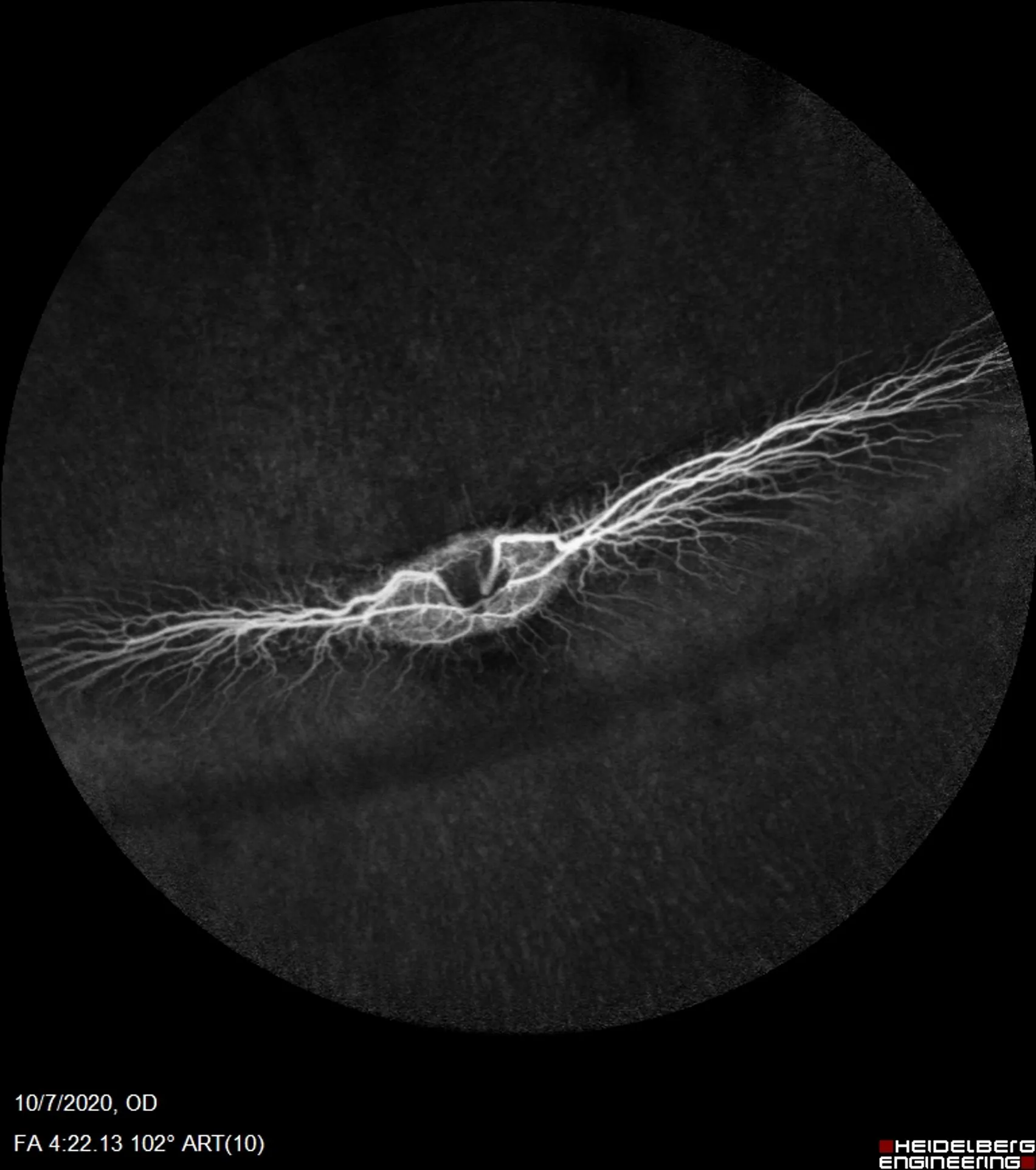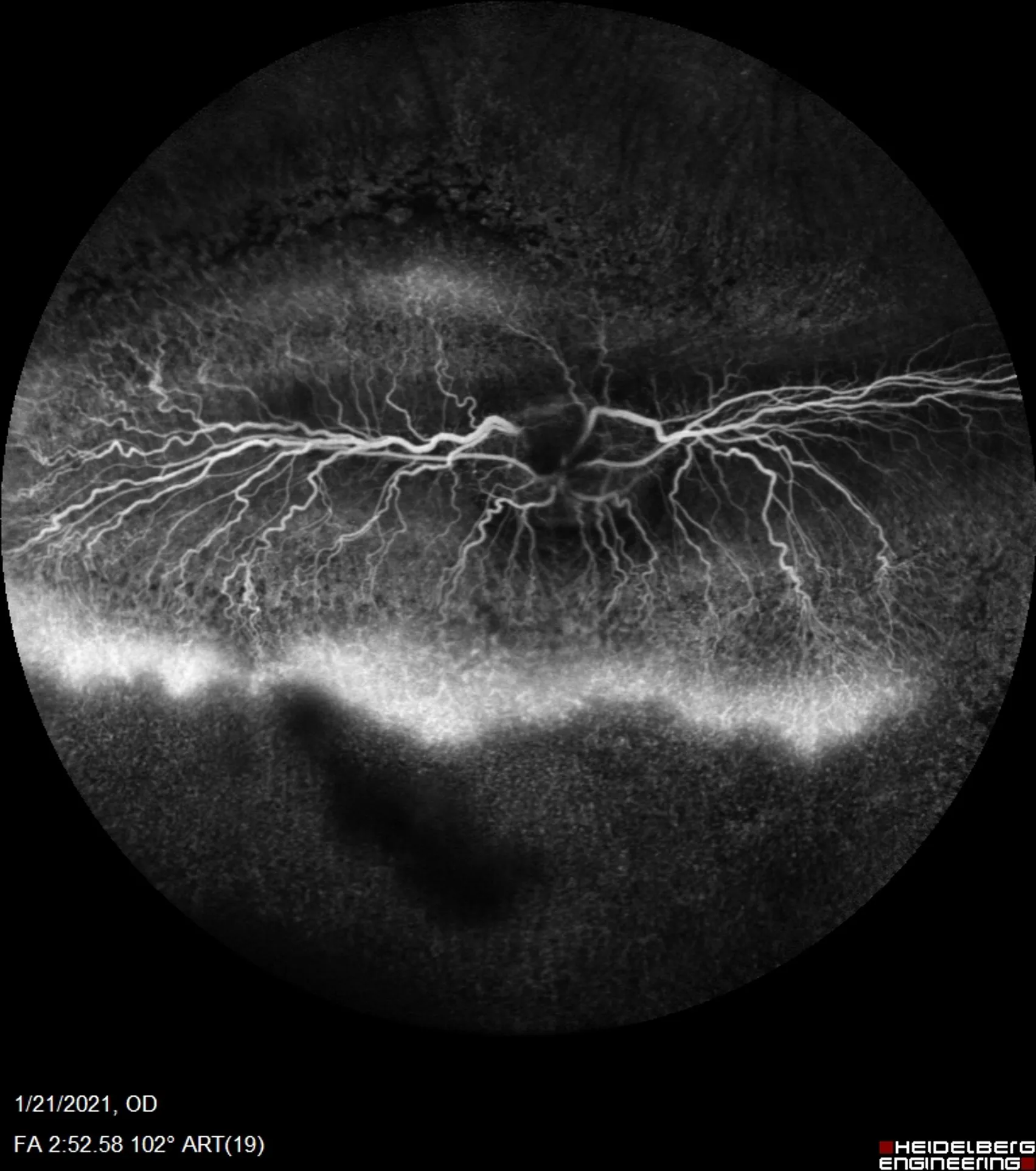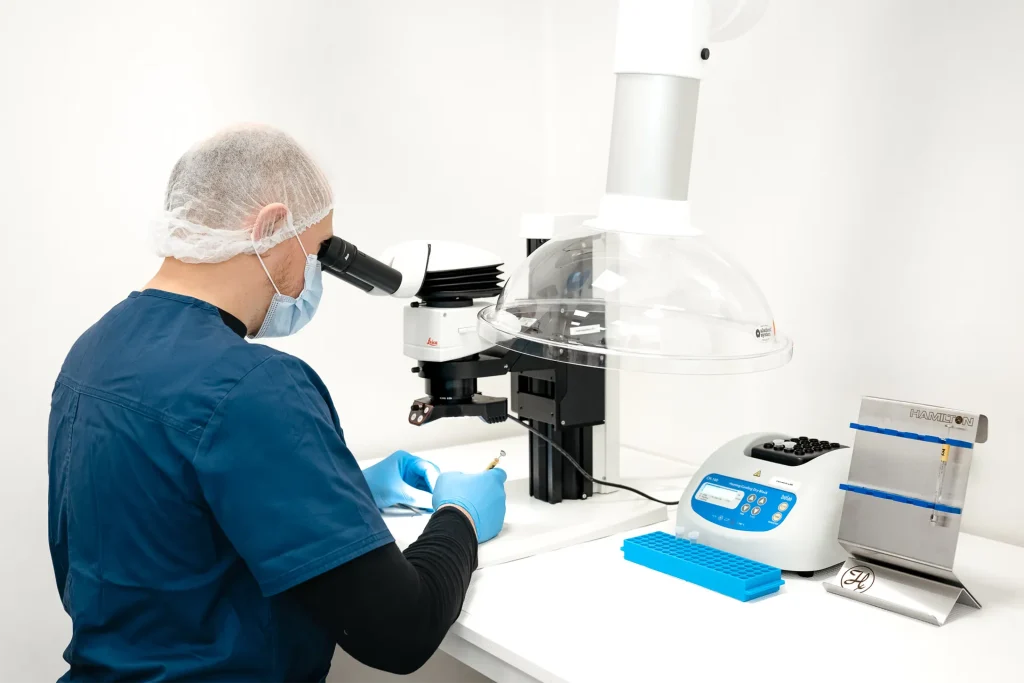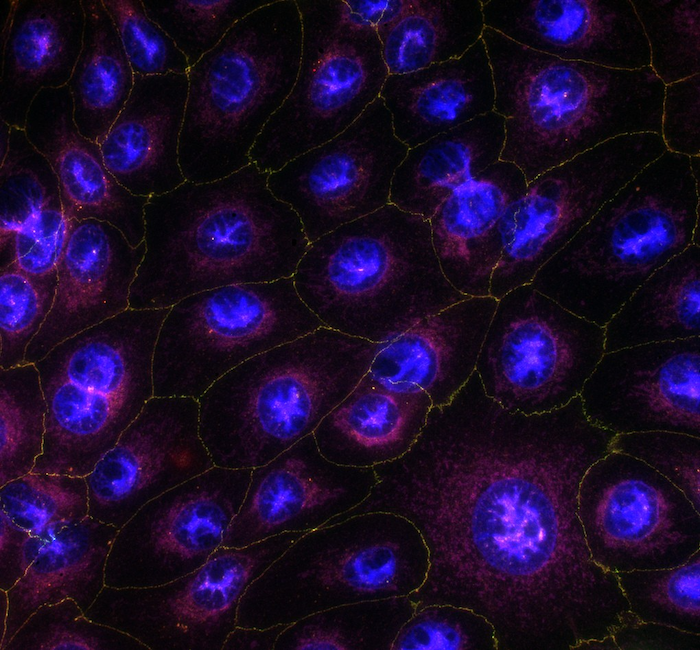in vivo models
DL-AAA–Induced Retinal Neovascularization and Chronic Leakage
In 2018, Cao et al. (Regeneron Pharmaceuticals) introduced a rabbit model of chronic retinal neovascularization and vascular leakage induced by intravitreal injection of DL-2-aminoadipic acid (DL-AAA), a glutamate analog with gliotoxic properties. A single DL-AAA injection produces sustained retinal pathology, including persistent leakage and neovascular changes that can last over a year. The model is highly reproducible and demonstrates strong responsiveness to anti-VEGF agents, making it a valuable tool for evaluating long-term efficacy and durability of therapeutic interventions.
Advances in in vivo imaging, such as fluorescein angiography and optical coherence tomography, enable real-time tracking of disease progression and therapeutic response in the same animals over time, reducing reliance on terminal endpoints.


Technical details
Rabbit
Intravitreal injection of DL-2-aminoadipic acid
Model develops in 15 weeks;
Suitable both for short (4 weeks) and long-term (up to a year) efficacy studies
A qualitative grade of retinal leakage (FA)
Highlights of this model
Standardized evaluation of efficacy
Anti-angiogenic activity can be observed within one week, enabling efficient screening of test compounds.
Supports longitudinal in vivo imaging
Compatible with advanced imaging techniques (e.g., fluorescein angiography) for noninvasive, time-resolved monitoring of disease, treatment response and relapse.
Robust and reproducible pathology
Induces consistent retinal neovascularization and sustained vascular leakage suitable for chronic disease modeling.
References
- Cao J, MacPherson TC, Iglesias BV, Liu Y, Tirko N, Yancopoulos GD, et al. Aflibercept Action in a Rabbit Model of Chronic Retinal Neovascularization: Reversible Inhibition of Pathologic Leakage With Dose-Dependent Duration. Invest Ophthalmol Vis Sci. 2018 Feb 1;59(2):1033–44
- Cesna R. Age-related macular degeneration models. Experimentica’s Youtube channel, 2020
- Neverauskas D, Paulauskas T, Cesna R, Adamoniene O, Kalesnykas G, Ragauskas S, et al. Comparative Evaluation of Anti-Angiogenic Effects of Biosimilar Drugs in a DL-α-Aminoadipic Acid Rabbit Model of Chronic Vascular Leakage in Retina. Investigative Ophthalmol Vis Sci. 2024;65(712). ARVO Annual Meeting Abstract
Receive model details
Interested to learn more? Fill out the form below and we will email you a white paper on the disease model. Your information will not be added to any mailing lists or used for marketing purposes.
"*" indicates required fields
We are here to help
Whether you have a question about our preclinical models, capabilities, pricing or anything else, our team is ready to answer all your inquiries.
Related services
AI for image analysis
AI-driven image analysis for in vivo studies, delivering faster, unbiased results and deeper insights for your preclinical ocular programs.
Learn moreHistological staining
Histological staining techniques for ocular and nervous system tissues to support detailed analysis.
Learn moreImmunohistochemistry
Experimentica offers a wide range of single and multiplex immunofluorescence labeling to explore disease pathogenesis and therapeutic targets.
Learn moreWestern Blotting
Western blot detects protein expression and modifications in ocular tissues with high sensitivity and precision
Learn moreRT-qPCR
qPCR measures gene expression in ocular tissues, supporting disease research and treatment evaluation.
Learn moreELISA
ELISA enables sensitive protein detection and quantification in ocular tissues and biofluids.
Learn moreCheck out our latest news and activities
All News






